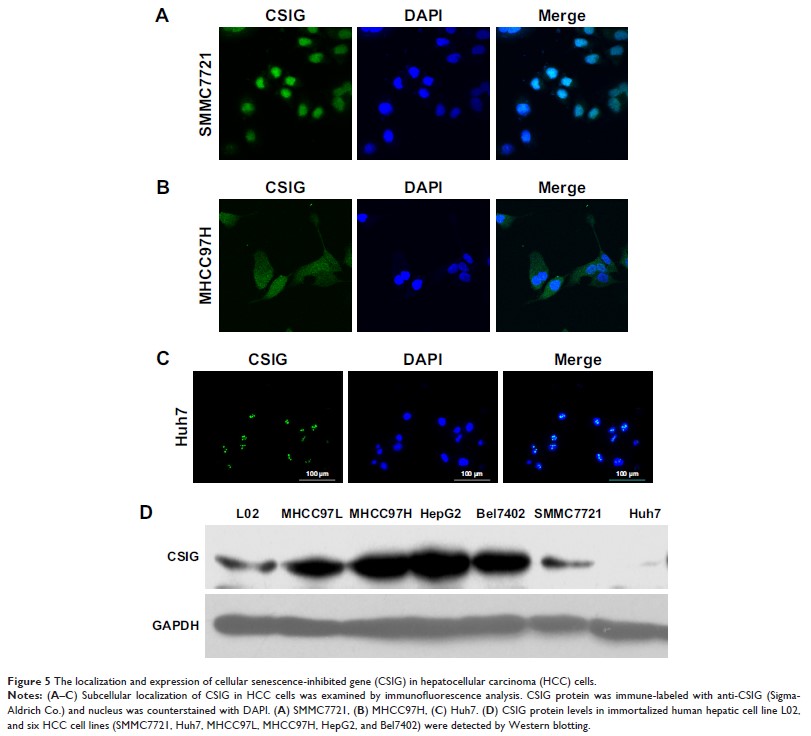9 7 8 1 6
论文已发表
注册即可获取德孚的最新动态
IF 收录期刊
- 3.3 Breast Cancer (Dove Med Press)
- 3.4 Clin Epidemiol
- 2.5 Cancer Manag Res
- 2.9 Infect Drug Resist
- 3.5 Clin Interv Aging
- 4.7 Drug Des Dev Ther
- 2.7 Int J Chronic Obstr
- 6.6 Int J Nanomed
- 2.5 Int J Women's Health
- 2.5 Neuropsych Dis Treat
- 2.7 OncoTargets Ther
- 2.0 Patient Prefer Adher
- 2.3 Ther Clin Risk Manag
- 2.5 J Pain Res
- 2.8 Diabet Metab Synd Ob
- 2.8 Psychol Res Behav Ma
- 3.0 Nat Sci Sleep
- 1.8 Pharmgenomics Pers Med
- 2.7 Risk Manag Healthc Policy
- 4.2 J Inflamm Res
- 2.1 Int J Gen Med
- 4.2 J Hepatocell Carcinoma
- 3.7 J Asthma Allergy
- 1.9 Clin Cosmet Investig Dermatol
- 2.7 J Multidiscip Healthc

间充质样标记物和与 ERK 通路有关的肝细胞癌迁移和增殖所涉及的细胞衰老抑制基因的反常作用
Authors Cheng Q, Tong TJ, Li Z, Hu S, Chen D, Wang SQ, Zhu JY
Received 23 September 2018
Accepted for publication 3 January 2019
Published 15 March 2019 Volume 2019:12 Pages 2035—2046
DOI https://doi.org/10.2147/OTT.S188449
Checked for plagiarism Yes
Review by Single-blind
Peer reviewers approved by Dr Cristina Weinberg
Peer reviewer comments 2
Editor who approved publication: Dr Sanjeev Srivastava
Background: Cellular
senescence-inhibited gene (CSIG) strongly prolongs the progression of
replicative senescence. However, roles and mechanisms of CSIG in tumor
progression have not been studied widely.
Methods: Roles of
CSIG in migration and proliferation of SMMC7721 and Huh7 cells were analyzed by
transwell or cell viability assays, respectively. Tumorigenicity assays were
used to study whether CSIG knockdown could affect SMMC7721 proliferation in
vivo. Next, Western blotting and RT-PCR were preformed to evaluate the effects
of CSIG on P-ERK cascade and epithelial mesenchymal transformation markers.
Then, the location and expression of CSIG protein was detected by
immunofluorescence and Western blotting, respectively. Finally, the Cancer
Genome Atlas dataset was used to analyze CSIG mRNA levels in hepatocellular
carcinoma (HCC) and adjacent non-tumor tissues.
Results: In this
study, we found that CSIG overexpression promoted SMMC7721 cell migration, and
CSIG knockdown suppressed tumorigenicity of SMMC7721 cells. In contrast to
expectation, CSIG up-regulation could significantly inhibit Huh7 cell growth
and migration. CSIG could promote P-ERK activation and levels of
mesenchymal-like markers in SMMC7721 cells, whereas CSIG suppressed P-ERK
activation and levels of mesenchymal-like markers in Huh7 cells. CSIG protein
was located in nucleoli as well as nucleoplasm of SMMC7721 cells, whereas CSIG
protein was mainly expressed in the nucleoli rather than nucleoplasm of Huh7
cells. Finally, due to individual differences, raised or down-regulated trends
of CSIG in HCC as compared with adjacent non-tumor tissues are different among
various patient populations.
Conclusion: In
summary, these results indicate that CSIG might play different roles in
SMMC7721 and Huh7 cells through regulating P-ERK pathway and mesenchymal-like
markers. The differential distribution of CSIG might be an important factor
that causes its different functions in SMMC7721 and Huh7 cells. CSIG might play
different roles in various patient populations.
Keywords: cellular
senescence-inhibited gene, hepatocellular carcinoma, migration, proliferation,
P-extracellular regulated protein kinases, mesenchymal-like markers
